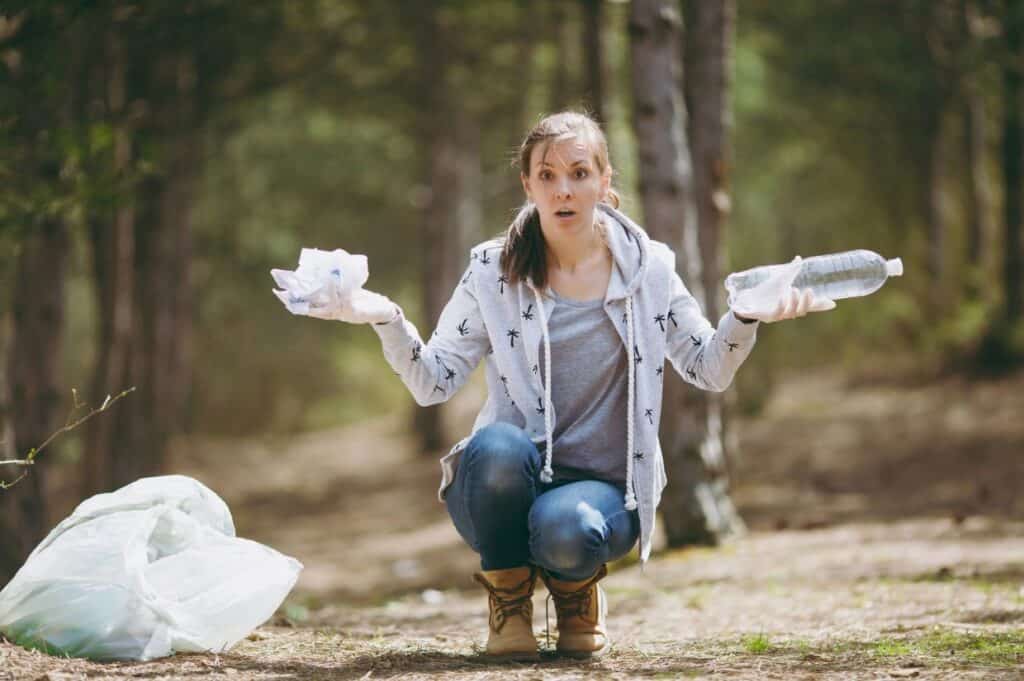Oceans and landfills are overflowing with plastic waste, with decomposition taking hundreds of years. Edible packaging has emerged as an urgent and sustainable alternative to plastic, designed to be zero waste. Discover what the world of edible packaging holds, and learn how it will impact your culinary experience for a healthier planet.

The plastic crisis
It has become impossible to avoid plastic as it has infiltrated every aspect of human life. While plastic has played a crucial role in advancing modern medicine, automobile manufacturing and space exploration, its single usage has resulted in devastating impacts on the environment.
A store-bought chicken pot pie usually comes in layers of plastic that are thrown out after it’s opened. According to National Geographic, if not discarded properly, it will likely be part of the 8 million tons of plastic waste that flood the oceans every year. The effects on marine life and ecosystems are detrimental, not to mention the dangers humans face from congesting microplastics. In the face of the plastic crisis, the invention of sustainable food packaging has emerged.
The solution: Edible packaging
The idea of edible packaging was inspired by nature — it’s naturally occurring if you think about it. Produce, like lemon, comes with skin, the peels of which act as a water-repelling layer. Modern technology has allowed humans to replicate this by combining materials to create a protective covering for biodegradable or consumable food.
Edible packaging often consists of natural ingredients like proteins, lipids and polysaccharides like starch. This means that you can consume the packaging along with the food it protects, so no waste is left behind, unlike plastic.
Types of edible packaging
This solution comes in two main forms: Edible films and edible coatings. Edible films mimic plastic wrap and are thin, flexible sheets. Some films have antimicrobial properties or contain enzymes, vitamins or minerals. They can even be designed to be tasteless or to have a specific flavor that complements the food. The next time you have leftover chicken from making your million dollar casserole, consider wrapping it in edible film instead of plastic wrap.
Edible coatings are applied directly to the surface of the food. Common techniques used to apply the coating include dipping the food in the material or spreading or spraying the coating onto the food. This method is often used to increase the shelf life of fruits and vegetables by acting as a barrier against water and oxygen.
The benefits of this solution
The main advantage of edible packaging is that it produces zero waste and reduces environmental impact by eliminating the need for single-use plastics. It also effectively preserves fruits, vegetables, dairy and animal products by preventing spoilage and maintaining their nutritional content, taste, smell and texture.
This material can protect food from UV light, act as a barrier against physical damage like dents or cuts, extend the shelf life of the food and have antimicrobial properties to prevent bacteria or fungal contamination. The material can also be altered to contain healthy microorganisms such as probiotics to increase the food’s nutritional value. Edible packaging seems to offer many benefits in reducing plastic and food waste, so why isn’t it more widely used in households?
Challenges and limitations
There are a few factors that prevent edible packaging from dominating the world as plastic does. As you can imagine, developing edible materials that can maintain food quality is hard to achieve. Complex technology is involved, resulting in higher production costs that are reflected in the product pricing for the end consumer. The truth is that not everyone is willing to splurge a little when a cheaper plastic alternative is available.
Environmental conditions like temperature and humidity also influence the longevity of edible packaging as it’s often made with water-soluble materials. Different climates and storage environments may demand different materials, which can be a logistical nightmare. Despite these challenges, headway is being made in this industry that is doing greater good for the world.
The future that edible packaging holds
According to Grand View Research, the global edible packaging market was around $920.78 million in 2022 and is expected to grow at a compound annual growth rate of 5.7% from 2023 to 2030. The market for this solution is growing, driven by consumer awareness of environmental issues and government policies that are requiring manufacturers to adopt more sustainable practices.
Innovative products featuring edible packaging are hitting the markets. For example, Evo makes edible sugar or coffee sachets that dissolve in water. Notpla produces edible drink pods, which are bubbles you can drink from and then eat. Edible packaging has also been making its way into the food service industry, so don’t be surprised if you order a vegetable casserole for takeout and it’s wrapped in edible seaweed. The good news is that as edible packaging becomes more widely adopted, humans may be able to eat their way out of the plastic problem, one package at a time.
Mandy Applegate is the creator behind Splash of Taste and four other high-profile food blogs. She’s also a co-founder of Food Drink Life Inc., the unique and highly rewarding collaborative blogger project. Her articles appear frequently on major online news sites and she always has her eyes open to spot the next big trend.